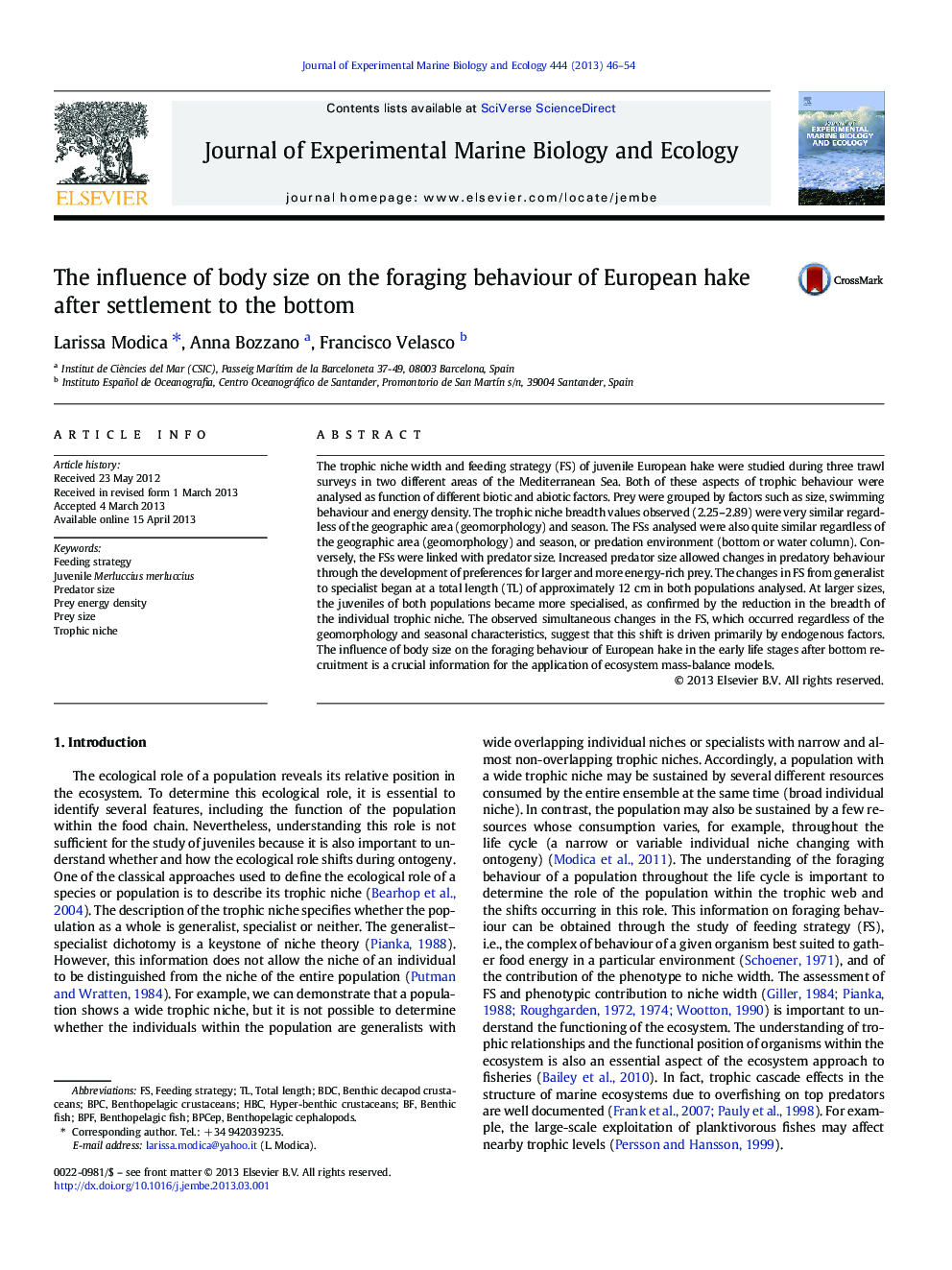| Article ID | Journal | Published Year | Pages | File Type |
|---|---|---|---|---|
| 4395654 | Journal of Experimental Marine Biology and Ecology | 2013 | 9 Pages |
Abstract
The trophic niche width and feeding strategy (FS) of juvenile European hake were studied during three trawl surveys in two different areas of the Mediterranean Sea. Both of these aspects of trophic behaviour were analysed as function of different biotic and abiotic factors. Prey were grouped by factors such as size, swimming behaviour and energy density. The trophic niche breadth values observed (2.25-2.89) were very similar regardless of the geographic area (geomorphology) and season. The FSs analysed were also quite similar regardless of the geographic area (geomorphology) and season, or predation environment (bottom or water column). Conversely, the FSs were linked with predator size. Increased predator size allowed changes in predatory behaviour through the development of preferences for larger and more energy-rich prey. The changes in FS from generalist to specialist began at a total length (TL) of approximately 12Â cm in both populations analysed. At larger sizes, the juveniles of both populations became more specialised, as confirmed by the reduction in the breadth of the individual trophic niche. The observed simultaneous changes in the FS, which occurred regardless of the geomorphology and seasonal characteristics, suggest that this shift is driven primarily by endogenous factors. The influence of body size on the foraging behaviour of European hake in the early life stages after bottom recruitment is a crucial information for the application of ecosystem mass-balance models.
Related Topics
Life Sciences
Agricultural and Biological Sciences
Aquatic Science
Authors
Larissa Modica, Anna Bozzano, Francisco Velasco,
